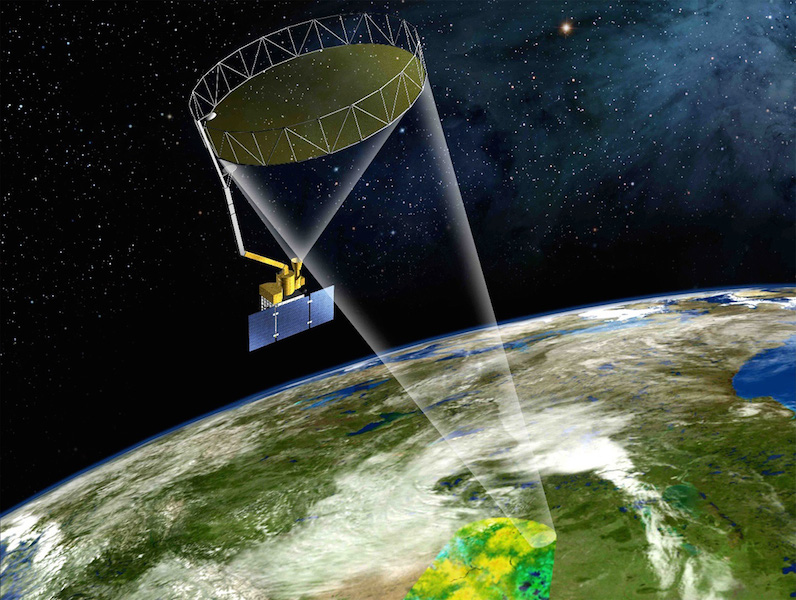
Artist’s conception of SMAP taking data from orbit // Photo: NASA Jet Propulsion Labratory
Studying soil from space
International CSA/NASA research project
The Canadian Space Agency has announced the selection of the University of Manitoba as one of five Canadian universities to receive a total of $1.4 million to participate in the scientific validation of NASA’s Soil Moisture Active Passive (SMAP) mission.
Soil sciences professor and head, Paul Bullock, in the Faculty of Agricultural and Food Sciences is heading the U of M project, Manitoba Validation of Satellite-derived Soil Moisture Products for Operational Use. The U of M project will receive $161,584.
“The project will use ground measurements to validate the data produced by the SMAP satellite,” says Bullock. “We will undertake a field campaign in southeastern Manitoba in 2016 (SMAPVEX16) to collect soil moisture observations by hand as well as readings from nine permanent soil sites in the Elm Creek-Carmen area of Manitoba.”
“This is an exciting announcement for us here at the University of Manitoba,” says Digvir Jayas, Vice-President (Research and International). “We have more than 200 industry sponsored research collaborations underway at the present time. This collaboration, through the Canadian Space Agency and NASA, expands our reach around the globe, literally.”
Although the soil holds only a small percentage of the total global water supply, soil moistures plays an important role in the global water cycle. Soil moisture affects field access (for farmers), crop yield, quality, and insect and disease risk. As soil moisture increases, so does the amount of rainfall that runs off that surface. High soil moisture is associated with increased flood risk.
“Information on the current state of soil moisture is limited,” says Bullock. “The data we will gather on the ground will be used to validate the sensor readings from the SMAP satellite.”
These projects serve to validate measurements of the soil moisture and seasonal freeze/thaw cycle, with the use of instruments collecting data on the ground, in the air and in space. This is an important step towards SMAP’s objective to provide high fidelity measurements and high resolution global maps of the Earth’s soil moisture and freeze/thaw state.
As part of a complex but essential validation campaign, the field data of each site are compared with measurements obtained by an aircraft instrument and by the SMAP satellite. This is an immensely complex endeavor since the measurements must be validated in accordance with the very diverse soil types, land cover, topography, weather and other atmospheric conditions that occur over our vast country and which are subject to changes over the seasons.
Further reading on the benefits of SMAP
Further reading on what soil actually is
Research at the University of Manitoba is partially supported by funding from the Government of Canada Research Support Fund.






